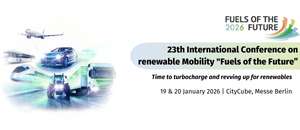US Navy tests 100% advanced biofuel
A US Navy Boeing EA-18G electronic attack aircraft completed a 100% biofuel powered flight from Naval Air Station Patuxent River, Maryland earlier this month (September).
Dubbed the "Green Growler" the aircraft flew using a bio JP-5 fuel produced from alternative sources, replacing the petroleum based JP-5, powering its two GE 414 turbofan engines.
“From takeoff to landing, you couldn't tell any difference," said Lt. Cmdr. Bradley Fairfax, project officer and test pilot with Air Test and Evaluation Squadron (VX) 23, after the first test flight 1 September.
He added: "The information presented to us in the airplane is pretty simplified but, as far as I could tell, the aircraft flew completely the same as [petroleum-based] JP-5 for the whole flight."
Using the Naval Air Warfare Center Aircraft Division's (NAWCAD) Real-time Telemetry Processing System (RTPS) at the Atlantic Test Ranges, flight test engineer Mary Picard monitored the ground and test flights and confirmed Fairfax's observations.
Picard said: "What we have seen is that the 100% bio-JP-5 appears to be basically transparent. It looks just like petroleum JP-5 in the airplane. So far, everything looks good and we haven't noticed a difference."
The JP-5 produced from alternative sources must be invisible to the user, said Rick Kamin, energy and fuels lead for Naval Air Systems Command (NAVAIR). Kamin also leads the alternative fuel test and qualification programe for the Navy.
The catalytic hydrothermal conversion-to-jet (CHCJ) process 100-percent alternative fuel performed as expected during a ground test 30 August at NAWCAD's Aircraft Test and Evaluation Facility (ATEF), followed by the first test flight 1 September, Kamin said.
"Today is a further example of how the Navy and Marine Corps continue to lead in energy innovation and, in doing so, remain the greatest expeditionary fighting force the world has ever known," said Mabus.
The fuels programme supports the secretary of the navy’s (SECNAV) operational energy goal to increase the use of alternative fuels afloat by 2020.
"As the owner of the JP-5 aviation jet fuel specification, our job at NAVAIR is to make sure that whatever source our JP-5 is made from, we know it will work in our aircraft," said Kamin.










